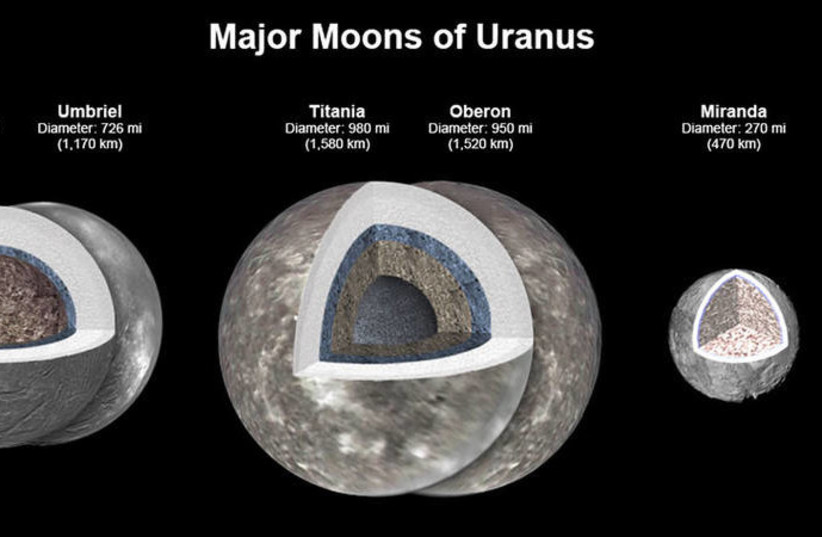A recent analysis from NASA's Voyage spacecraft has led scientists to conclude that four of Uranus' largest moons contain water. These moons are believed to have an ocean layer that exists between the icy crust and core, and they could be miles deep.
Uranus has at least 27 moons, five of which were large: Ariel, Umbriel, Titania, Oberon, and Miranda. According to recent peer-reviewed study from NASA scientists, the four largest are believed to have the ability to retain heat caused by radioactive decay. Other moons were not large enough to retain enough heat, certainly not enough to keep a possible ocean inside the moon from freezing over.
Moons Ariel and Titania are two of the largest for Uranus, ranging from 720 to 980 miles.
Data gathered by a survey from NASA scientists helped prioritize further Uranus exploration to better understand the ultimately mysterious system surrounding the planet. This discovery may even pave the way for further exploration beyond the distant planet's moons.
“When it comes to small bodies – dwarf planets and moons – planetary scientists previously have found evidence of oceans in several unlikely places, including the dwarf planets Ceres and Pluto, and Saturn’s moon Mimas,” a lead study author said in a statement via the US-based space agency. “So there are mechanisms at play that we don’t fully understand. This paper investigates what those could be and how they are relevant to the many bodies in the solar system that could be rich in water but have limited internal heat.”

The study gave a fresh look to data uncovered by multiple flybys of Uranus dating back to the 1980s. These Voyager flybys included a ground-based probe and observations, further identified by computer models and findings from NASA’s Galileo, Cassini, Dawn, and New Horizons. Each of the space vessels discovered ocean worlds. They also helped understand insights into the chemistry and geology of some of Saturn and Pluto's icy moons, which are around the same size as the moons of Uranus.
Underneath the surface of Uranus
One goal the participating researchers set out to reveal was just how porous the surfaces of Uranian moons are. The study revealed that the moons are insulated enough for heat retention great enough to host a thriving ocean as well as a potential heat source for rocky mantles. These mantles would release heat and a warm enough environment that could even make the moons habitable, specifically on the moons Titania and Oberon.
Not all of the largest Uranian moons can host water, though. Miranda, the innermost and fifth largest moon, had revealed in recent thermal modeling that if water was hosted, it likely didn't last for long and had probably already frozen over.
Internal heat isn't the only factor keeping the believed oceans of these large moons. They are believed to contain chlorides and ammonia, which is known for its ability to act as an antifreeze. They are also believed to contain enough salt to maintain internal oceans.
“We need to develop new models for different assumptions on the origin of the moons in order to guide planning for future observations,” researchers added.
